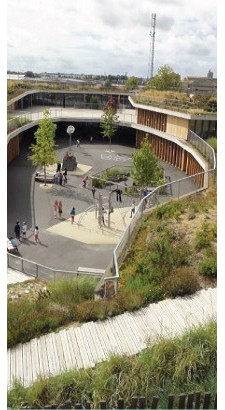VEGDUD – The role of plants in sustainable urban development: impacts on climate, hydrology, energy management and the atmosphere

Project details
- Lead : Plante & Cité
- Partners : IRSTV, LCPC, CSTB, LEPTIAB, ONERA, SEVE Nantes, LPGN, EPHYSE, GAME, IRSN
- Duration : 2007-2014, project completed
- Plante & Cité correspondents : Damien Provendier, Caroline Gutleben
- Funding : French National Agency for Research (Agence Nationale de la Recherche, ANR) – Call for ‘Sustainable Cities’ projects, 2009.
- Themes : Plants – landscaping – urbanism: integrated approaches
- Sub-themes : Landscape planning, Landscape analysis
- Key words : atmosphere - urban climate - carbon footprint - urban buildings – hydrology - ANR project – typology
Objectives
- Develop a functional typology of urban vegetation
- Assess the impact of vegetation on interacting urban systems: the climate, atmosphere, energy, hydrology, at different spatio-temporal scales.
Abstract
Today, urban sprawl has its problems: the increase in artificial surfaces at the expense of natural areas has serious consequences, particularly on the quality of the urban environment (e.g., urban heat-island effect, pollution), but also on energy costs. With the ever increasing urban population, compromises or solutions are required that respond to the needs of various stakeholders. In the VegDUD project, funded by the French National Research Agency, vegetation was studied as one of the potential solutions for urban sustainable development. The impact of vegetation was studied across several themes: urban microclimate, thermal insulation of buildings, management of rainwater and physical (thermal/acoustic) approaches to well-being. The methods used included bibliographic research, experimental approaches (two experimental campaigns and long-term field measurements) and theoretic modelling (scenarios). Air quality issues, carbon footprint and biodiversity were also discussed following a literature review.
Plante & Cité published summary information sheets on the impact of plants. The purpose of these documents was to valorise the main results of the VegDUD project. They were written for professionals (urban planners, architects, landscape designers, managers, policy makers) who need solid evidence to discuss and design innovations, taking into account form and use for sustainable cities of the future.
Summary
The results of this multidisciplinary study relate to the impact of vegetation on climatic, thermal and hydrology issues. Each vegetation type has specific advantages and disadvantages, but given the limitation of space in populated cities, the primary recommendation of this research is to provide sufficient space for all forms of vegetation. This scientific work provides a better understanding of the services provided by urban vegetation, in order to design green cities that are resilient and pleasant to live in.
The book ‘Une Ville Verte’ has been published. (‘A Green City’, Eds Quae)
